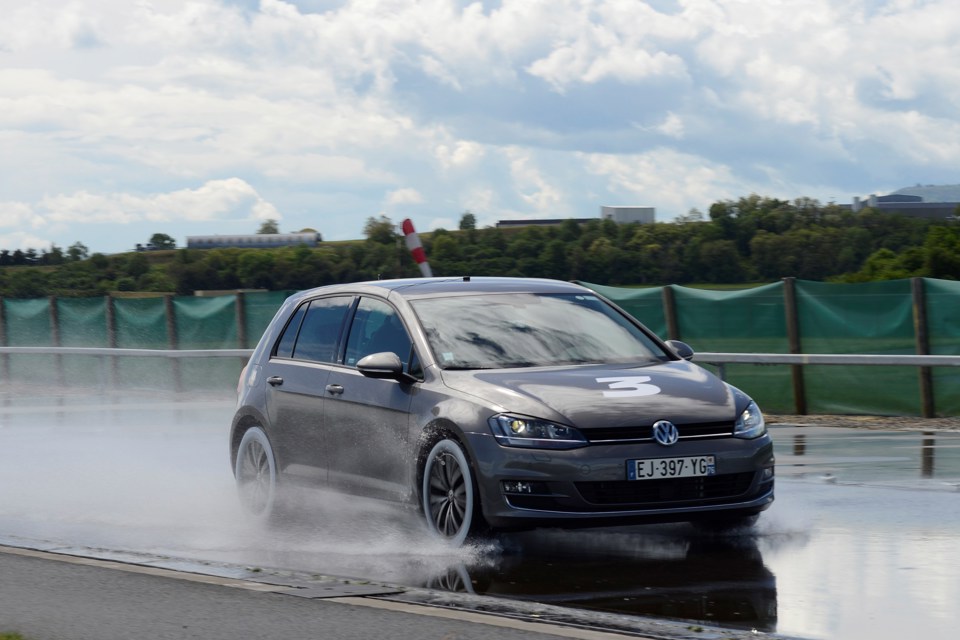Michelin is calling on industry test bodies and consumer organisations to start comparing and testing tyres when they are worn to the legal limit to give a better indication of in-life performance.
The manufacturer also says that changing tyres at 3mm is unnecessary as there is no link between tread depths at 1.6mm and increasing accident rates.
In addition, changing tyres at 3mm would cost the motorist money and increase carbon emissions - especially as a tyre becomes more fuel-efficient as it wears.
An Ernst & Young report commissioned by Michelin found that changing tyres at 3mm instead of 1.6mm would cost European Union drivers an extra 6.9 billion Euros a year in unnecessary tyre purchases and additional fuel consumption.
The company says tyres do not perform the same when new – and as a tyre wears, and the tread depth reduces, the difference in performance will change, and differences may be accentuated.
This is because tyre performance is affected by many individual characteristics; casing design, materials used, rubber compounds, tread design, shape of grooves and sipes, etc.
Modern tyre technology makes it possible to provide high levels of performance and grip from new, and through all of the tyre’s life down to the legal tread wear limit.
Michelin says with this in mind, changing tyres early (i.e. before they are fully worn) does not guarantee greater safety, and no current studies have established a direct link between accident levels and tyre tread depth.
Premature removal reduces the useful life of the product and would increase the frequency at which tyres are replaced. Not only would consumers have to make unnecessary purchases, but this would also have an adverse impact on the environment.
Changing tyres too early would result in 128 million additional tyres being used a year in Europe - which would cause nine million tons of additional CO2 emissions every year.
In addition to the environmental impact, replacing tyres before they are fully worn also represents a significant and unjustified increase in costs for consumers; Ernst and Young estimates an extra 6 billion euros in Europe alone.
Michelin says when consumers reflect on road safety, they generally think about emergency braking in wet conditions – and with reason as braking distances increase in wet conditions.
The company says that as long as tyres are not damaged in any way, the safety on dry roads actually improves as their tyres get worn. A worn tyre will stop a vehicle more quickly in the dry than the same tyre when new.
Another improvement in performance of a worn tyre over a new one is fuel consumption, says Michelin. As tyre tread depth reduces, the fuel economy of the vehicle will improve, and with one tank of fuel in five being used to simply overcome the rolling resistance of the vehicles tyres, this is a welcome benefit.
The rolling resistance of a tyre at the point of removal at the legal tread limit is 80% of that tyre in a new state.
Therefore, keeping a tyre on the vehicle until the legal tread wear limit increases the time when it is in its most fuel efficient state, and reduces the motorist’s fuel bill.
Michelin tests at Ladoux have shown that on wet roads, some worn tyres can perform as well as some new tyres, and that although the remaining tread depth is a factor in wet braking, the performance of the tyre, at all stages of its life, is more important.
Tyre performance is affected by many factors; casing design, materials, rubber compounds, tread design, shape of grooves and sipes etc. and these all affect how the tyre performs throughout the tyre’s life – right down to the legal tread wear limit.
All tyres do not perform the same when new – and the differences in performance are more accentuated when that tyre is worn, according to their design.
Michelin says tyre labelling and European regulations have brought in minimum standards for tyre performance, and particularly for wet braking – one of the criteria measured by tyre labelling.
While all tyres legally sold in Europe meet this minimum standard when new, Michelin tests have shown that the wet braking capabilities of some tyres reduce quickly when worn, and may fall below this ‘minimum standard’ requirement.
However, some premium products not only meet the criteria when new, they do so when worn to the legal tread wear limit.
Michelin workshops at Ladoux have shown that a premium tyre, worn to the tread wear limit can perform as well as a brand new lower performing tyre.


















The Engineer - 18/05/2017 10:39
Saying what the industry expect them to. Define 'wet' roads? our weather has changed over time, we now get more erratic weather with torrential down pours causing deeper standing water for periods. Yesterday was like that and on the M42 even at very modest speed it was pretty alarming with the steering becoming light often and I have over 3mm. Having driven on sub 2mm its dreadful. This is the real world, not Millbrook and its controlled sprinkler surface.